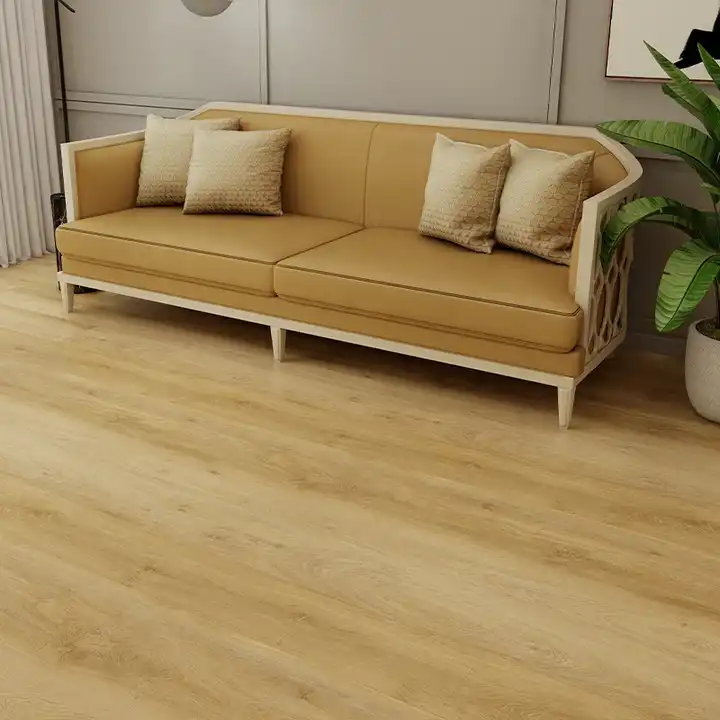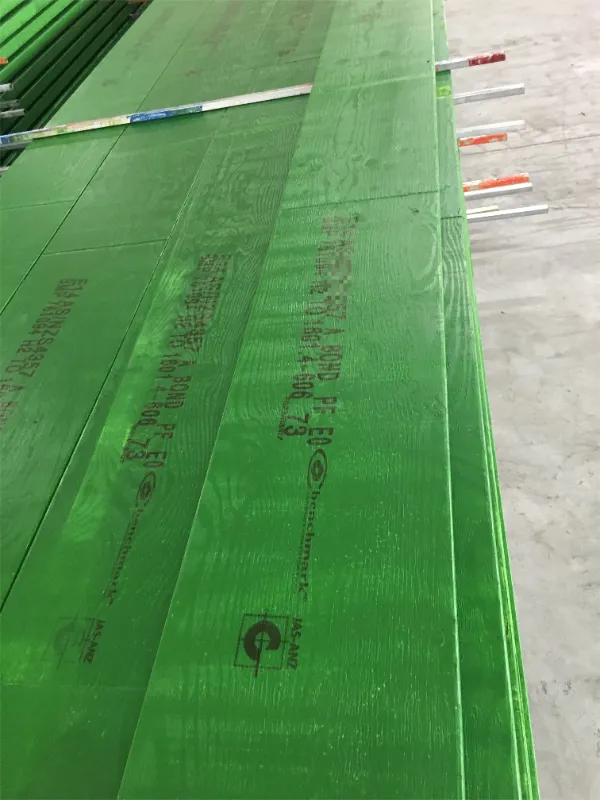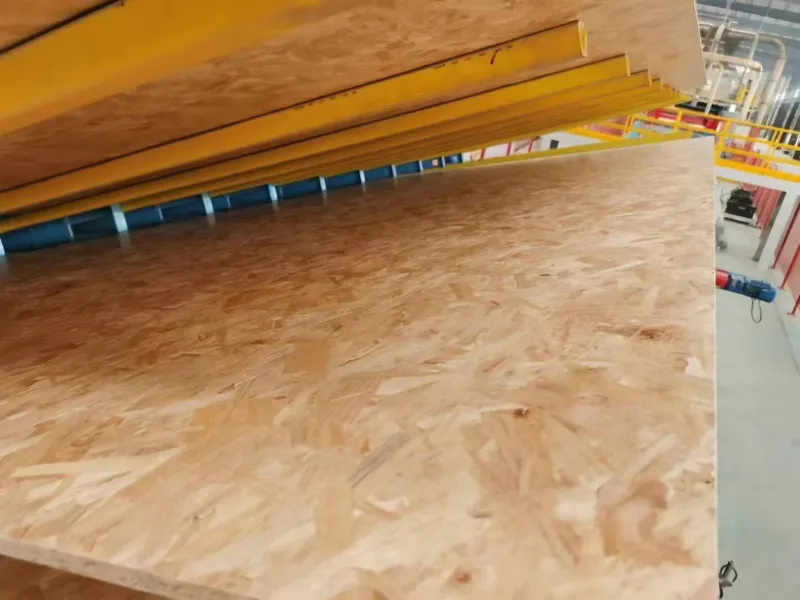Dealing with plywood that warps can be a major headache for anyone involved in woodworking or construction. Whether you're building cabinets, furniture, or tackling larger structural projects, a bent or twisted panel can ruin your hard work and waste valuable materials. This article dives deep into why plywood warps, explores the different types of plywood available, and helps you understand which kind of plywood is least likely to warp. We'll also discuss how plywood thickness and overall quality play crucial roles in keeping your wood flat and stable. If you've ever searched a forum for answers to "what causes wood to warp?" or "which hardwood plywood is best?", you're in the right place. Read on to become a more informed buyer and user of plywood, ensuring your projects stand the test of time.
As Allen, from a factory specializing in engineered wood products like LVL Timber and various plywood types, I've seen firsthand the challenges customers like Mark Thompson in the USA face. They need reliable, high-quality plywood that performs consistently. This guide is born from years of experience in manufacturing and exporting these materials, aiming to share insights that help you choose wisely.
1. What Exactly Causes Plywood to Warp? Understanding the Culprits.
Warping in plywood is a common frustration, but understanding its root causes is the first step to preventing it. The primary culprit behind plywood deformation is moisture. Wood is a hygroscopic material, meaning it naturally absorbs and releases moisture from and to the surrounding air. When one part of a plywood panel absorbs or releases moisture at a different rate than another, internal stresses develop. These stresses can cause the plywood to cup, bow, twist, or crook – all forms of warp. This issue is particularly prevalent when there are significant fluctuations in humidity.
The construction of plywood itself, which involves gluing together thin layers of wood veneer, is designed to provide strength and stability and reduce the tendency to warp compared to solid wood. However, if the moisture content of the veneers is not properly managed during manufacturing, or if the finished plywood is exposed to uneven moisture conditions, problems can arise. For example, if one side of a plywood sheet gets wet while the other stays dry, the wet side will expand, causing the panel to cup. Similarly, rapid drying of a plywood panel can also induce warping if it doesn't dry evenly. The quality of the glue used and the pressure applied during lamination also play a role, but moisture imbalance remains the main driver of what causes wood and plywood to warp.

2. Does Plywood Thickness Really Prevent Warping? The Impact of Dimension.
Many people believe that thicker plywood is inherently more resistant to warping, and to a certain extent, this is true. A thicker panel generally possesses greater rigidity and internal stability, making it better able to resist the forces that cause warping. For instance, an 18mm plywood sheet will typically be more stable than a 6mm sheet of the same type of plywood when exposed to similar moisture fluctuations. The increased mass and cross-sectional area of thicker plywood help to distribute stresses more evenly.
However, plywood thickness alone isn't a foolproof guarantee against warping. Even very thick plywood can warp if subjected to extreme moisture gradients or poor handling. The quality plywood and its internal construction are just as important, if not more so. A poorly made thick plywood with internal voids or inconsistent veneer quality might warp more easily than a well-made, thinner plywood. Therefore, while choosing an appropriate thickness for your application is important for structural integrity and can contribute to stability, it should be considered alongside other factors like the type of plywood, its grade, and how it’s manufactured and stored. For applications demanding high stability, it's about finding the right balance of thickness and quality.
3. Which Type of Plywood is Least Likely to Warp for Your Project?
When selecting plywood that is least likely to warp, several types stand out due to their construction and material properties. Generally, plywood made with more plies, high-quality veneer, and waterproof or water-resistant adhesive will offer better dimensional stability. Understanding the different categories can help you make an informed choice.
Here's a quick comparison of common plywood types and their general resistance to warping:
| Plywood Type | Typical Warp Resistance | Key Characteristics Affecting Stability | Common Uses |
|---|---|---|---|
| Baltic Birch Plywood | High | Multi-ply construction, uniform thin veneers, void-free core | Cabinetry, furniture, high-end woodworking |
| Marine-Grade Plywood | Very High | Waterproof glue, high-quality veneers, no core voids | Boat building, outdoor projects, wet areas |
| Exterior-Grade Plywood | Good to High | Water-resistant glue (WBP), durable face veneers | Outdoor construction, sheathing |
| Hardwood Plywood (e.g., Oak, Maple) | Moderate to High | Depends on core type (veneer core, MDF core, particleboard core) | Furniture, cabinetry, decorative panels |
| Softwood Plywood (e.g., Pine, Fir) | Moderate | Fewer plies typically, can be prone to movement with moisture | General construction, subflooring |
| MDF Core Plywood | High | Very stable core, less prone to expansion/contraction | Cabinet doors, flat panels |
Baltic Birch plywood is renowned for its stability. It's made from multiple thin layers of veneer (often 1.5mm thick birch veneers), resulting in a dense, flat, and strong panel with minimal voids. This multi-ply construction provides excellent strength and stability, making it a favorite for woodworking projects like jigs, fixtures, and high-quality cabinet construction. Another excellent option, particularly for demanding environments, is Marine Plywood, which is specifically designed to withstand harsh, wet conditions without delamination or significant warping due to its superior glue and veneer quality.
4. Exploring Hardwood Plywood vs. Softwood Plywood for Stability: What’s the Difference?
The terms hardwood plywood and softwood plywood refer to the type of wood used for the face and back veneers, and sometimes the inner plies. Hardwoods (like birch, oak, maple) generally come from deciduous trees, while softwoods (like pine, fir) come from coniferous trees. This distinction can influence the plywood's stability and resistance to warping.
Hardwood plywood is often considered more stable and less likely to warp than softwood plywood, especially when comparing products of similar plywood thickness and grade. Hardwoods are typically denser and have a more complex cell structure, which can contribute to greater dimensional stability. For instance, birch plywood, particularly Baltic Birch, is a type of hardwood plywood prized for its flatness and resistance to warping. When you look for plywood for furniture or cabinetry, high-quality hardwood plywood is often the preferred choice due to its smooth finish and stability. However, the core material in hardwood plywood also plays a significant role. A veneer core hardwood plywood will behave differently than one with an MDF core or particleboard core.
Softwood plywood, while generally strong and suitable for structural applications (like sheathing or subflooring), can be more susceptible to warping if exposed to significant moisture changes. The wood fibers in softwoods are often less dense, and the panels might have fewer plies compared to premium hardwood plywood. That said, high-quality softwood plywood made with good manufacturing practices can still perform very well. Ultimately, the choice between hardwood and softwood plywood for warp resistance depends on the specific grade, manufacturing quality, and intended application.

5. The Role of Ply Count: Do More Layers Mean Less Warping?
The number of plies, or layers of wood veneer, in a plywood panel is a critical factor influencing its stability and resistance to warping. Generally, plywood with more plies for a given thickness tends to be more stable. Each ply has its grain direction oriented perpendicular to the adjacent layers. This cross-graining technique is fundamental to plywood's strength and stability, as it balances out the natural tendency of wood to expand or contract more in one direction than another.
A multi-ply construction means more glue lines and more cross-bands, which helps to restrict movement across the panel. For example, a 3/4-inch plywood panel made with 13 plies (common in Baltic Birch) will typically be much more stable and less prone to warping than a 3/4-inch plywood panel made with only 5 or 7 plies. The thinner individual veneers used in multi-ply plywood are also less prone to significant movement themselves. This is why products like Baltic Birch plywood are highly sought after for applications where flatness is paramount, such as drawer boxes or cabinet components. When you're evaluating plywood, don't just look at the overall thickness; consider the number of plies as an indicator of its potential stability and its ability to stay flat.
It's important to note that while more plies generally mean better stability, the quality of those plies and the adhesive used to bond them are equally vital. Even a plywood with many layers can warp if it has internal voids, inconsistent veneer thickness, or a poor-quality glue that fails under stress or moisture. Therefore, a high ply count is a good sign, but it should be part of an overall assessment of the plywood's quality.
6. Is MDF Core Plywood or Baltic Birch Plywood a Warp-Free Solution?
When searching for plywood that won’t warp, two options often come up in discussions, especially in woodworking forum communities: MDF core plywood and Baltic Birch plywood. While no wood product is entirely "warp-free" under all conceivable conditions, these two are significantly more stable than many other types of plywood.
MDF core plywood features a core made of Medium Density Fiberboard (MDF), with wood veneer applied to the face and back. MDF itself is an engineered wood product made by breaking down hardwood or softwood residuals into wood fibers, combining it with wax and a resin binder, and forming panels by applying high temperature and pressure. Because MDF is very uniform and has no grain direction, it is exceptionally stable and resistant to expansion, contraction, and warping caused by humidity changes. This makes MDF core plywood an excellent choice for applications requiring flat, stable panels, such as large cabinet doors, tabletops, and paint-grade furniture. The veneer provides the aesthetic appeal of real wood, while the MDF core ensures the panel stays flat.
Baltic Birch plywood, on the other hand, is a veneer core plywood, but it's unique. It's constructed entirely from thin birch veneers, typically 1.5mm thick, laminated together with strong, often water-resistant adhesive. The high number of plies for its thickness (e.g., a 1/2" sheet might have 9 plies, and a 3/4" sheet might have 13 plies) and the absence of internal voids contribute to its remarkable strength and stability. Baltic Birch is less prone to warping than standard hardwood plywood or softwood plywood because the stresses are distributed more evenly across many thin layers. It's favored for drawer construction, shop jigs, and high-end cabinetry. While it can still be affected by extreme moisture, it's one of the most reliable plywood options if you need a panel that is least likely to warp.

7. How Important is the Grade of Plywood in Preventing Warping? (e.g., AA, BB)
The grade of plywood is a significant indicator of its quality, and this, in turn, affects its propensity to warp. Plywood grades typically refer to the quality of the face and back veneers, denoted by letters (e.g., A, B, C, D for American standards, or letter combinations like AA or BB for products like Baltic Birch). An "A" grade veneer is smooth, paintable, and has few to no repairs, while a "D" grade veneer may have knots, splits, and other defects.
Higher grade plywood (e.g., A or B face veneers) generally implies better manufacturing standards, including more carefully selected veneers, fewer voids in the core (especially in veneer core plywood), and potentially better control over moisture content during production. These factors contribute to a more stable panel that is less likely to warp. For example, Baltic Birch plywood is often graded with two letters, like BB/BB, where "BB" indicates single piece face and back veneers that may have some neat patches or minor color variations but are generally smooth and sound. This consistent quality throughout the panel minimizes internal stresses.
Lower grade plywood, such as CDX (C-grade face, D-grade back, Exterior glue), is designed for structural purposes like sheathing where appearance is not critical. While functional, it may have more imperfections, including knots and small voids, which can become focal points for moisture ingress or stress concentration, potentially leading to warping. When choosing the right plywood for applications where flatness is crucial (like furniture or cabinetry), investing in a higher grade plywood is often a wise decision. It not only looks better but is also more likely to provide the strength and durability and dimensional stability you need. For projects like formwork, a durable surface like that found on Phenolic film faced plywood 16mm is essential, and the grade of the underlying plywood core also matters for reuse and stability.
8. Practical Tips: How Should You Store and Handle Plywood to Avoid Warping?
Even the highest-quality plywood can warp if not stored and handled correctly. As a plywood supplier, we always emphasize proper care to our customers like Mark Thompson, as it's crucial for maintaining the material's integrity from our factory to its final use. Improper storage is one of the most common reasons plywood warps before it's even used in a project.
Here are some key tips to store plywood and handle it to avoid warping:
- Store Flat: Always store plywood sheets horizontally on a flat, level surface. Never lean them against a wall for extended periods, as this can cause them to bow under their own weight.
- Use Supports (Stickers): If stacking multiple sheets, place evenly spaced supports (known as "stickers" or "bearers") between layers and underneath the bottom sheet. These supports should be of uniform thickness and aligned vertically. This allows for air circulation around the sheets and prevents moisture buildup.
- Keep it Dry: Store plywood in a dry, well-ventilated area, away from direct sources of moisture like rain, plumbing leaks, or damp concrete floors. The storage environment should have stable humidity levels if possible.
- Acclimate Plywood: Before using plywood in your project, allow it to acclimate to the environmental conditions of the workshop or job site for at least 48-72 hours. This means bringing the plywood into the space where it will be used, stacking it properly with stickers, and letting its moisture content stabilize with the surrounding air. This step is crucial to prevent warping after assembly, especially in woodworking projects.
- Protect from Sun and Weather: If storing plywood outdoors temporarily, ensure it's covered with a waterproof tarp, but allow for some ventilation to prevent condensation. Direct sunlight can cause one side to dry out too quickly, leading to warping.
- Handle with Care: When moving plywood sheets, especially thinner ones, carry them on edge or use two people to support them adequately to prevent flexing or cracking.
By following these simple guidelines, you can significantly reduce the risk that your plywood will warp, ensuring it remains flat and ready for your woodworking or construction needs. Remember, preventing plywood from warping starts with how you store plywood.

9. Can You Straighten Warped Plywood Once It Happens?
Discovering that your plywood has warped can be incredibly frustrating, especially if you've already invested time and money into it. The question often arises: can you straighten warped plywood? The answer is sometimes, but it depends on the severity of the warp, the type of plywood, and its thickness. It’s often a challenging process with no guarantee of perfect results.
One common method to try and straighten mildly warped plywood involves reintroducing moisture to the concave side (the side that has shrunk or dried out) or gently drying the convex side (the side that has expanded). This can be done by:
- Damp Towels: Placing damp (not soaking wet) towels on the concave side of the plywood and leaving it for a few hours or overnight. The idea is to allow the wood fibers on that side to absorb moisture and expand, counteracting the warp.
- Weight and Restraint: After applying moisture (or if the warp is minor and due to uneven drying), you can try to flatten the plywood by placing it on a flat surface, concave side down, and applying even weight across the entire sheet. Sometimes, clamping it between two flat, sturdy cauls (like thick MDF sheets) can help. This process may take several days, and you might need to adjust moisture levels.
- Sunlight (with caution): Some woodworkers report success by placing the warped plywood with the convex (bowed out) side facing the sun. The heat can help dry and shrink that side. However, this needs careful monitoring to avoid over-drying or further damage.
It's important to be patient and make changes gradually. Forcing the plywood too quickly can cause it to crack or delaminate. For severely warped plywood, or for certain types like those with very rigid cores or waterproof glue, straightening might be very difficult or impossible without damaging the panel. In many cases, especially for critical applications, it might be more cost-effective and reliable to replace the warped plywood with a new, flat sheet. Prevention, through proper storage and acclimatization, is always the best strategy to avoid warping.
10. Choosing High-Quality Plywood: What Key Features Should You Look For?
When your goal is to find plywood that is least likely to warp and performs well in your projects, knowing what to look for in high-quality plywood is essential. As a manufacturer, we focus on several key attributes to ensure our products, like our structural ply and other engineered panels, meet the expectations of customers like Mark Thompson, who prioritize quality alongside competitive pricing.
Here are critical features to consider when selecting high-quality plywood:
- Core Construction & Void Absence: Examine the edges of the plywood. A high-quality veneer core plywood will show uniform layers with no visible gaps or overlaps (voids). Voids weaken the panel and create areas where moisture can accumulate, leading to delamination or warping. Baltic Birch is a prime example of plywood known for its void-free core. For ultimate stability, an MDF core plywood is also an excellent choice.
- Number of Plies: As discussed, more plies generally mean greater stability for a given plywood thickness. Compare the ply count between different options. For instance, a premium 3/4" plywood might have 9, 11, or even 13 plies, while a utility grade might have only 5 or 7.
- Veneer Quality (Face and Back): Look at the face veneer and back veneer. Higher grades (like A or B) will be smoother, with fewer defects, patches, or knots. This not only affects appearance but can also indicate overall manufacturing care. The consistency of veneer thickness throughout the panel is also important.
- Flatness and Uniform Thickness: The plywood sheet should be flat when you buy it. Sight down the edges and across the surface. Also, check for consistent thickness across the panel. Variations in thickness can indicate poor quality control.
- Glue Type: The type of adhesive used affects durability and water resistance. Exterior-grade plywood uses WBP (Weather and Boil Proof) glue, making it suitable for outdoor projects or areas prone to moisture. Marine-grade plywood uses an even more robust waterproof glue. Interior plywood may use urea-formaldehyde or other glues that are less water-resistant.
- Certifications: Look for certifications that attest to quality, safety, or sustainability, such as FSC (Forest Stewardship Council) for responsible sourcing, CARB compliance (California Air Resources Board) for formaldehyde emissions, or specific structural certifications if the plywood is intended for load-bearing applications. Reputable plywood suppliers should be able to provide information on these.
- Species of Wood: For hardwood plywood, species like birch, maple, or oak are common. For softwood plywood, pine or fir. The species can affect density, strength, and workability. Understanding the characteristics of the type of wood used can help you choose.
By paying attention to these details, you can select high-quality plywood that offers the desired strength and durability, looks good, and, most importantly, is less prone to warping, ensuring your woodworking projects are successful. Investing in better quality plywood often saves time, money, and frustration in the long run. If you're looking for specific dimensions, for example, 12mm plywood, ensure these quality checks are performed for that particular product.

Key Takeaways to Prevent Plywood Warping:
To ensure your plywood stays flat and your projects are successful, remember these crucial points:
- Moisture is the Enemy: The primary cause of plywood warping is uneven moisture absorption or loss.
- Choose Wisely: Select the type of plywood best suited for your project. Baltic Birch plywood and MDF core plywood are excellent for stability. Marine-grade plywood offers superior water resistance.
- Thickness Matters (But Isn't Everything): Thicker plywood generally offers more warp resistance, but quality of construction and ply count are equally important.
- More Plies, More Stability: Plywood with a higher number of plies for its thickness is generally more stable.
- Grade Indicates Quality: Higher grade plywood usually means fewer defects, better veneers, and a more stable panel.
- Proper Storage is Key: Always store plywood flat, well-supported, and in a dry, stable environment.
- Acclimate Your Plywood: Allow plywood to adjust to the humidity of your workshop or job site for at least 48-72 hours before use.
- Inspect Before Purchase: Look for flat sheets with no core voids and consistent veneer quality.
- Understand Core Differences: Veneer core, MDF core, and particleboard core plywood all have different characteristics affecting stability.
- Prevention is Better Than Cure: While you can sometimes straighten warped plywood, it's far easier to prevent it from happening in the first place.
By understanding what causes wood to warp and how to select and handle high-quality plywood, you can significantly improve the outcome of your woodworking and construction endeavors. As a manufacturer, we at Jsylvl are committed to providing reliable engineered wood products, and we hope this guide helps you make the best choices for your needs.
Post time: May-16-2025




